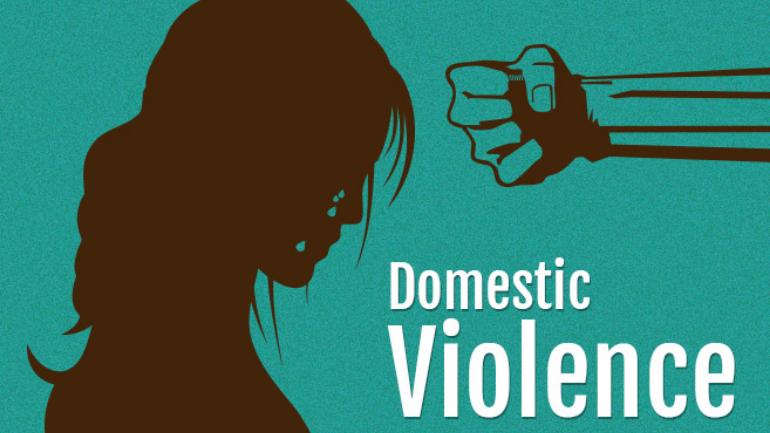
Critical Insights on Domestic Violence and Family Safety
Understanding Domestic Violence: A Comprehensive Guide to Support and Solutions
Domestic violence is a critical issue that threatens the safety and well-being of families across the globe. It encompasses various forms of abuse, including physical, emotional, economic, sexual, and psychological harm. Addressing domestic violence is crucial for protecting victims and fostering healthy family dynamics. This article explores the types of domestic violence, its prevalence, common myths, contributing factors, its impact on families, and prevention strategies. Additionally, it highlights vital support systems and real-life cases to provide a thorough understanding and effective solutions.
Types of Domestic Violence
Domestic violence manifests in several forms:
- Physical Abuse: Involves the use of force or violence to harm or control a partner.
- Emotional Abuse: Aims to undermine the victim’s self-worth and mental well-being.
- Economic Abuse: Entails controlling the victim’s financial resources to create dependency.
- Sexual Abuse: Involves forcing unwanted sexual activity.
- Psychological Abuse: Instills fear, manipulation, and intimidation to dominate the victim.
Prevalence and Statistics of Domestic Violence
Domestic violence is alarmingly widespread, affecting millions worldwide. According to statistics, one in three women will experience physical or sexual abuse during their lifetime. Although men also suffer from family abuse, it occurs at a lower rate. These figures underscore the urgent need for intervention and support to reduce the occurrence of domestic violence.
Debunking Common Myths About Domestic Violence
Several myths surround domestic violence, contributing to misunderstanding and lack of action. Here are a few misconceptions:
- Myth 1: Domestic violence only affects low-income families.
Fact: Domestic violence crosses all socioeconomic boundaries, affecting individuals of all backgrounds. - Myth 2: Victims can easily leave abusive relationships.
Fact: Many victims face significant barriers, such as financial dependency or fear of retaliation, making it difficult to escape abusive situations.
Factors Contributing to Domestic Violence
Various factors contribute to the prevalence of domestic violence:
- Socioeconomic Factors: Financial stress and poverty can increase the likelihood of family violence. Limited resources and access to support services trap victims in abusive relationships.
- Psychological Factors: A history of abuse or untreated mental health conditions in perpetrators can perpetuate the cycle of violence. Low self-esteem and unresolved trauma can also contribute to abusive behaviors.
- Cultural and Societal Influences: In some cultures, there are beliefs that justify abuse, such as viewing women as property. Societal stigma and reluctance to discuss domestic violence further prevent victims from seeking help.
The Impact of Domestic Violence on Families
Effects on Victims
Victims of domestic violence experience both short-term and long-term physical and emotional consequences:
- Short-term effects include physical injuries and emotional trauma.
- Long-term effects may involve chronic health issues and lasting psychological scars that require ongoing support and recovery.
Effects on Children and Other Family Members
Children exposed to domestic violence are particularly vulnerable. They may suffer from anxiety, depression, and behavioral problems. Witnessing violence can normalize aggressive behavior and impact their emotional development. Family members also endure emotional distress, and may experience a decline in their mental well-being.
Economic Impact
Domestic violence carries significant economic consequences. Victims may miss work, leading to loss of income, while medical and legal expenses can drain financial resources. The broader economy is also impacted due to lost productivity and increased healthcare costs.
Prevention and Intervention Strategies
Community and Societal Interventions
Community education and awareness programs are essential in preventing domestic violence. These initiatives educate the public about the signs of abuse and the resources available for victims. Community support networks, such as safe spaces and crisis shelters, also provide immediate assistance.
Legal and Policy Frameworks
Effective laws and policies are vital in protecting victims and deterring abusers. Stringent domestic violence laws, including restraining orders and emergency housing provisions, help safeguard victims. Proper implementation of these laws ensures protection and legal support for those affected.
Support Systems for Victims
Victims of domestic violence need robust support systems for recovery. Key resources include:
- Shelters and Crisis Centers: Offer immediate refuge and safety for victims.
- Counseling Services: Help victims emotionally heal and regain control of their lives.
- Legal Aid and Advocacy: Guide victims through the legal process, ensuring they receive proper protection and resources.
Real-life Cases and Success Stories
Successful Interventions
Coordinated community response (CCR) programs, which unite law enforcement, social services, and healthcare providers, have proven effective in combating domestic violence. These programs create a comprehensive and unified approach to tackling family abuse.
Survivor Stories
Real-life survivor stories highlight the importance of timely intervention and the role of support services in facilitating recovery. Many survivors have shared how counseling and legal assistance helped them reclaim their lives and build a future free from violence.
Lessons Learned
Lessons from various intervention programs emphasize the need for increased public awareness and law enforcement training. These efforts improve outcomes and shape more effective strategies in addressing domestic violence.
Resources and Support for Domestic Violence Victims
Community Resources
Several organizations offer essential support services to victims of domestic violence. 1800RESPECT provides nationwide assistance, including information, counseling, and support for victims of domestic and sexual violence.
Counseling and Legal Aid
Counseling services play a crucial role in emotional healing, while legal aid organizations help victims navigate the legal system. These services ensure that victims have the support they need to pursue protection and seek justice.
Online Resources
Online platforms also provide valuable resources, educational materials, and community support networks to help victims understand their rights and options.
Legal Protections
Family Law Australia offers crucial protections for victims, including protection orders issued by the Family Court to ensure safety. These orders prevent abusers from contacting or approaching victims, offering immediate relief and security.
How to Seek Help
For those experiencing domestic violence, seeking help can be daunting. Stewart Family Law Australia provides clear guidance for victims, emphasizing the importance of documenting abuse, contacting trusted friends and family, and reaching out to local support services. Legal assistance is also available to help victims through the process of obtaining protection orders and other legal remedies.
Conclusion: A Unified Effort to Combat Domestic Violence
In conclusion, addressing domestic violence requires a collective effort from individuals, communities, and policymakers. Raising awareness, implementing effective legal frameworks, and providing robust support systems are essential in protecting victims and preventing abuse. Stewart Family Law Australia remains committed to advocating for domestic violence victims and ensuring their safety through clear guidance and comprehensive support services.
Together, we can work to reduce the incidence of domestic violence, enhance family safety, and foster a society where everyone is treated with dignity and respect.
